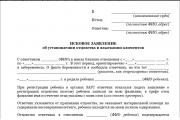Find out if your baby is getting enough to eat. Signs of hunger: how to understand that a child wants to eat. Correct feeding process
How can you tell if your baby is getting enough breast milk? What may indicate its deficiency? How to feed correctly so that the baby always gets enough? And what to do if there is still not enough milk? Answers from lactation consultants about a nutritious diet for a newborn.
Young mothers most often ask consultants about the adequacy of feedings. He has a lot of reasons! Women's breasts do not allow one to visually determine the amount of milk in it and its volume used per feeding. Neither pumping nor “self-analysis” based on the feeling of fullness of the mammary glands will give an accurate idea. You can determine whether a baby is getting enough breast milk solely by observing the baby himself. It is important for mom to know the main features of proper, sufficient feeding.
On-demand feeding technique
The “on demand” feeding technique is approved as the basis for adequate breastfeeding. It is followed not only by consultants of specialized charitable organizations, but also by official health care institutions. It is noted in the orders of the ministries of health of civilized countries, including Russia. What are its features?
The mother's breast is ready to provide the baby with food from the first minute of life. It produces extremely valuable colostrum, but in small quantities. The volume of fluid rich in growth factors, immune compounds and protein does not exceed 30 ml per day. But this is enough to provide the child with everything necessary until the 4th day of life.
Colostrum is replaced by primary milk, and only then by mature milk. And its volume depends on several factors.
- Application frequency. Natalia Gerbeda-Wilson, a consultant for the international breastfeeding organization La Leche League, says: it is during the formation of lactation that the volume of milk required for feeding is determined. And the baby himself confirms this volume. On-demand breastfeeding supports the natural volume regulation mechanism. If the mother adheres to the principle of “regular” feeding, there will initially be less milk than needed. And by 2-4 months, lactation may disappear completely.
- Duration of stay at the breast. It may seem that the baby is simply sleeping with the breast in his mouth, only occasionally sucking on it. But this idea is wrong. During the first days and months of life, a baby combines feeding with communication with the outside world, the need for affection, warmth, and calm. Only staying at her mother’s breast can provide her with the best care. Prolonged sucking in itself stimulates lactation. Feeding from 20 to 50 minutes is considered normal, but 2 hours at the breast is not out of the “norm”.
The baby should ask for the breast frequently. He can do this up to 25 times a day! This amount of feeding will not last long. After three months, the regimen will stabilize and reach 6 feedings per day.
By adhering to the on-demand feeding technique, you will not be faced with the question of how to tell if your baby is getting enough breast milk. It will always be present in sufficient quantities necessary for the baby. But there are also signs to determine the level of lactation. According to pediatricians, they need to be analyzed in a complex manner, since single criteria do not give a clear answer about the volume of breast milk in a woman.
5 Signs You Have Enough Milk Volume
“Look at your baby, not the clock,” is what lactation consultants say when it comes to feeding frequency and duration. Modern medicine believes that analyzing the condition of the baby and monitoring it are the best “measures” of the abundance of your breast milk. What are these signs?
- Feeding frequency. On average, a baby in the first days of life should eat 8-12 times. A variant of the norm is a greater number of feedings. Such frequent “snacks” are determined by several factors. Firstly, with the need for tactile contact with the mother. Secondly, with the extremely small volume of the child’s stomach, which is not able to accommodate much at a time. And thirdly, with the characteristics of breast milk itself, which is quickly digested.
- Duration of sucking. The baby should be at the breast as long as he needs. In this case, there will be no reason to believe that the baby is not getting enough breast milk. Don't take him off your chest, even if the baby looks asleep. Choose a comfortable position and wait until he lets you go on his own or “falls off” in his sleep.
- Presence of a swallowing reflex. The baby should not just lie under the breast, sucking it. You should hear him swallowing the milk. Moreover, in the first minutes of feeding, the frequency of swallowing will be greater, since the baby receives thinner milk. Then he begins to swallow less frequently, but suck with effort, as it is the turn of the rear, thicker, valuable food.
- Weight gain within normal limits. It is necessary to measure how quickly and how intensively the baby began to recover from the fourth day of his life. By this time, he loses some of his birth weight, getting rid of primary feces and tissue swelling. Normal weight gain is between 125-215 grams per week.
- Healthy looking baby. The baby should look cheerful and loudly demand the breast. The skin of a healthy baby is pink, elastic, and quickly returns to shape when pressed.
These signs should be observed in combination, but this takes time. When you need to quickly determine whether a baby does not have enough breast milk or whether he is getting enough of it, you can use the simplest “measures.” These include the amount of urine and feces it produces.

How often does a child pee
Feeding colostrum does not provide much fluid. Therefore, the baby will write infrequently. It is enough to change 2 diapers per day, filled to the middle “mark”. This mark is easy to recognize. Do an experiment: pour 3-4 tablespoons of water into the diaper and weigh it in your hand. The urine of a baby weighs the same for a couple of “writings”. Thus, a child receiving colostrum can pee 4-5 times a day.
With the arrival of full-fledged milk, the situation changes. The baby begins to receive more fluid, and accordingly, more urine is produced. During the day he urinates up to 12 times, so mom will have to change 5-6 diapers.
This sign can only be used if the child does not eat anything other than breast milk. It does not work when supplemented with formula or supplemented with water. During the development of lactation, supplementation and additional feeding reduce natural milk production.
How often does your baby poop?
Another parameter is how to understand whether a newborn baby does not have enough milk, or whether he receives enough of it. Within 3 days after birth, the baby gets rid of meconium - the primary feces, and the intensity of its “production” is low - 1-2 times a day. With the arrival of full milk, the frequency of “pooping” increases significantly and reaches 5 times a day, which indicates a sufficient amount of nutrition.

False signs of low milk supply
In some situations, mothers mistakenly believe that their lactation volume has decreased and the baby is not getting enough breast milk. Understanding these physiological processes will help avoid failure of breastfeeding.
- No sensation of chest tightness. Usually, after the sixth week of breastfeeding, the mother notices that her breasts are no longer painfully full. And the baby, who previously “hung on his boobs” for a long time, began to eat much faster. This situation does not indicate a decrease in milk production. She says that you and your baby have learned to use your breasts correctly! Your body begins to produce it as much as necessary. And the baby began to consume it with sufficient intensity, which comes only with experience.
- Reducing the frequency of bowel movements. From about six weeks of age, the baby's bowel movements change. He stops pooping after each feeding and may do so less often. In this case, the norm may be bowel movements either 6 times a day or 1 time a day. According to pediatricians, it is much more important to monitor the baby’s condition in this matter. And if, during the individual “pooping” mode, he does not show concern, excretes mustard-colored or greenish-brown feces without a repulsive odor, it means that he receives enough food and his intestines are working in the correct mode.
- Sudden increase in appetite. The baby suddenly begins to demand the breast much more often and sucks for a long time. This is how growth spurts appear, which disappear within a few days. At this time, the child’s body needs more food. And it is important for the mother to provide for the baby, so she should feed longer and more often. The importance of growth spurts also lies in stimulating lactation. Over the course of a few days, the volume of breast milk increases, which covers the needs of the growing body.
When should a mother worry? If the baby sleeps for four hours without requiring the breast. This is not normal for a baby in the first days of life. The exception is the period of deep night sleep, when the child rests for up to 5 hours without waking up.
Techniques for dealing with milk deficiency
If the baby rarely asks to eat or looks lethargic, apathetic, does not gain weight well, or is stunted in growth, there is reason to believe that the child is not getting enough breast milk. However, it is extremely rare that this situation means that it is necessary to introduce supplementary feeding and, even more so, to abandon breastfeeding. No artificial formula will be more nutritious and valuable for the baby than the mother’s natural food.
If a deficiency is detected, lactation consultants recommend continuing to feed, paying attention to the frequency and frequency of feeding.
- Feed more often, reduce the intervals between feedings to a minimum. Keep your baby at your breast for as long as possible.
- Offer both breasts at each feeding. Let your baby drink milk from one first. When you notice that he has stopped swallowing, offer him a second one. At the next feeding, give the second breast first so that the baby receives more nutritious hind milk in sufficient volume.
- Stop feeding when baby wants. Even if it seems to you that he sucks for too long, be patient and let the baby finish his “lunch” on his own. After a while he will fall asleep or “fall away” on his own.
- Apply correctly. Make sure that your baby's lips cover the areola and not the nipple. Otherwise, feeding will cause discomfort, and the baby will not be able to suckle productively.
- If your sucking is sluggish, change breasts frequently. Do this several times during each feeding if you notice that your baby has stopped swallowing.
- Avoid pacifiers and don’t give your baby anything other than your breast.. Pacifiers and pacifiers reduce sucking efficiency and are therefore contraindicated for babies who are underweight. When introducing supplementary food, it should be given from a spoon or cup.
- Remember about yourself. Do not be nervous about a lack of breast milk, since a woman’s negative emotional state is detrimental to lactation. Eat well, rest when you have free time, and drink more fluids.
By following these recommendations, you can quickly restore lactation. Breastfeeding charity experts will also help with this. Free consultations online or by phone are provided by specialists from LLLI (La Leche League), AKEV (Association of Natural Feeding Consultants).
These principles on how to find out if a baby has enough breast milk are general. And they may not be suitable for your baby. As a rule, the mother intuitively senses whether everything is okay with the baby. And if he observes a healthy and active child who often asks to breastfeed, everything is fine with him. And he has enough of your milk to the fullest extent.
A lack of breast milk or weak lactation leads to the fact that the baby simply does not get enough to eat. Do not rush to take drastic measures. Such as supplementary feeding, transition to mixed feeding and supplementary feeding. These measures are not necessary for the baby, since the baby receives the necessary elements from breast milk.
Only mother's milk provides 100% of the substances that a newborn needs. In addition, such methods lead to an even greater deterioration in lactation; milk may soon disappear completely. And supplementing the baby with food leads to colic and other digestive disorders.
How to tell if your baby has enough milk
- The baby is crying a lot. There can be many reasons for crying, so this symptom alone should not be considered as an indicator of a specific problem (malnutrition, colic, illness or lack of attention). The cause of crying can only be identified through a combination of several signs;
- Weakness and decreased activity of the baby. Remember that a child is calm because of his character, and not because of a lack of milk;
- The newborn sleeps poorly or does not sleep at all;
- Insufficient number of bowel movements. In the first month after birth, stool occurs 8-12 times a day after almost every feeding. Then the frequency gradually decreases and reaches 1-2 times a day. Absence of bowel movements for two or more days is a sign that the baby is constipated. Read more about the norms of newborn stool at the link /;
- The baby sucks his finger and the edges of the diaper, smacks his tongue or lips. These signs indicate that the baby is not getting enough breast milk and is looking for a breast further;
- The baby does not gain weight or loses it. In the first month, a newborn should gain on average 90-150 grams per week. During the second to fourth month - 140-200 grams per week. After the fifth month, the increase gradually decreases. By six months, the baby's weight should approximately double its value at birth. You can learn more about the norms for weight gain for infants up to one year old;
- The intake rate does not play a big role in determining whether the baby has enough milk. This norm is different and depends on the baby’s age, individual development and needs. As a rule, in the first four days a newborn eats about 200 ml of breast milk per day, by a month the norm increases to approximately 600 ml.
Why doesn't the baby eat?
When a baby does not get enough breast milk, the main reason is a lack of breast milk and low lactation levels. In this case, you need to figure out why the milk disappears. Most often, low milk production is due to improper nutrition of the nursing mother.
However, the baby may not eat enough even with normal milk production. This means that he is not getting enough milk. As a rule, this occurs due to incorrect organization of breastfeeding, uncomfortable feeding position and improper latching of the nipple.
The psychological state of the baby and mother is an important factor during breastfeeding. Depression, psychological unpreparedness to breastfeed or accept milk, painful sensations in the breast and cracked nipples lead to the fact that milk disappears or the child rejects and does not take the breast.

Solution
If the baby does not get enough breast milk, and lactation is at a good level, it is necessary to monitor the progress of feeding. Incorrect feeding posture and improper latching of the nipple lead to the baby not receiving the required portion of milk.
When feeding, the baby should grasp both the nipple and the area around it with a radius of 2-2.5 cm (areola). Make sure that the nose rests, but does not sink into the chest. In this case, both lips should be turned outward, and the child can freely adjust the nipple in the mouth. The baby should latch on to the breast on his own; do not force or push in the nipple. Force feeding leads to improper nipple latching. If your baby doesn't latch on, give him a thumb suck.
If the problem is lactation, it is necessary to increase stimulation of milk production. There are many methods that will help establish lactation without harming the baby. Among the most effective methods are:
- Drink more fluids. Warm, abundant drinking will ensure successful lactation, strengthen the immune system and help with viral diseases. The minimum volume of liquid per day is 2 liters, half of which should be drinking water. Otherwise, you can drink dried fruit compote and weak tea. Soups and broths are also sources of liquid;
- Adjust your diet. Remember that the menu must include the necessary vitamins and elements. Be sure to eat vegetables and fruits, meat and fish. But it is better to avoid foods that are too fatty and spicy during breastfeeding. Reduce your consumption of salty foods, sweets and starchy foods. By the way, there are foods and drinks that increase. You can find a list of these products at the link /;
- Get more rest and sleep, walk in the fresh air and do simple exercise. Yoga or swimming are activities that are not contraindicated for a nursing mother. At the same time, you will quickly regain your prenatal figure, recharge with energy and good mood;

- . Circular movements in a clockwise direction stimulate lactation and, if necessary, will help eliminate lumps and strain the milk. In addition, massage is a prevention of lactostasis and mastitis. However, keep in mind that breastfeeding massage should be enjoyable and not painful;
- Feed not according to a schedule, but according to the baby’s demand. Frequent feeding will help enhance lactation. During the day you can feed every 1-2 hours, and at night - at least four times. ;
- Be sure to take care of your breast hygiene. Wash twice a day without using regular soap and towels, as they irritate the skin. For washing, use neutral liquid soap, and for wiping, use soft napkins. Watch your nipples, as they cause discomfort and dangerous diseases. Such as staphylococcus, mastitis and other infections;
- Drink decoctions of cumin, dill and fennel. However, use folk remedies with caution, as some components cause allergies in infants. Special ones will also help.
Tips from the article “” will help you improve milk production. When breastfeeding, it is important to maintain stress resistance and a comfortable emotional background. However, many mothers experience depression after childbirth. Lack of sleep, fatigue and other problems lead to strong feelings. In this case, do not rush to take sedatives, as some drugs negatively affect the composition of milk and the condition of the newborn.
Relaxing baths and aromatherapy, good sleep and walks in the fresh air will help with depression and stress. Valerian, motherwort and glycine tablets are considered safe during lactation. But doctors do not recommend using modern sedatives, such as Persen or Novopassit, for nursing mothers. In addition, alcohol tinctures are contraindicated when breastfeeding.

When is supplementation needed?
Sometimes, if a child does not get enough breast milk, doctors recommend supplementary feeding. However, please note that this can only be done on the recommendation of a doctor! As a rule, supplementary feeding is prescribed when the mother is ill and has been taking medications for a long time that are incompatible with lactation. In addition, supplementary feeding is necessary if the baby does not gain or loses weight, as well as if the baby was born premature.
Supplementary feeding with the mixture should be 30-50% of the daily volume of food. If the dose is exceeded, mixed feeding will turn into artificial! And without breast milk, the baby will not receive the necessary elements and vitamins for full growth and development. In addition, to maintain breastfeeding, it is better not to use bottles and nipples. The baby quickly gets used to the nipple and subsequently refuses the breast. They will tell you how to properly feed your baby and which formula to choose.
The site provides reference information for informational purposes only. Diagnosis and treatment of diseases must be carried out under the supervision of a specialist. All drugs have contraindications. Consultation with a specialist is required!
Healthy newborn: general information, birth weight, concepts of premature and post-term newborn
Considered healthy newborn, born at 37 - 42 weeks, with a birth weight of 2.5 - 4.0 kg, who does not require resuscitation and does not detect any physical defects upon first examination by a neonatologist in the delivery room.If a child was born at 36 weeks and 6 days or earlier, he is considered premature, if more than 42 full weeks - post-term. Gestational age is calculated from the first day of the woman's last menstrual period and is measured in weeks. Conditions of prematurity and postmaturity are often associated with many different diseases, including life-threatening ones, so such children must be observed by an experienced neonatologist.
Children weighing less than 2.5 kg at birth are small, and those weighing more than 4 kg are large. Even if the baby was born on time, its weight may not be normal. Such children also require closer attention and in-depth examination.
Height, circumference of the head and chest of the newborn
 In addition to body weight, in the delivery room a newborn is measured using a stadiometer and a measuring tape to measure the body length and circumference of the head and chest. These indicators make it possible to assess the harmony of the child’s physical development, identify some hereditary diseases, endocrine pathology and damage to the central nervous system.
In addition to body weight, in the delivery room a newborn is measured using a stadiometer and a measuring tape to measure the body length and circumference of the head and chest. These indicators make it possible to assess the harmony of the child’s physical development, identify some hereditary diseases, endocrine pathology and damage to the central nervous system. Normally, the height of a newborn at birth is 45-56 cm. On average, about 50 cm. It is logical that premature babies have a shorter height - this is not a sign of inharmonious development.
The circumference of the chest is measured with a measuring tape, which is placed behind the corners of the shoulder blades (the lowest point of the shoulder blades), and in front above the nipples. Normal values for the chest circumference of a full-term newborn are 33-35 cm.
To measure the circumference of the head, you need to place a measuring tape at the back of the most protruding point of the back of the head, and in front, hold it directly above the eyebrows. Normally, this figure is 33 - 37.5 cm; it should not exceed the chest circumference by more than 2-4 cm. Measuring the head is an indispensable procedure in diagnosing diseases of the central nervous system. During the first week of life, the head must be measured every day. Normally, during the first month of life, the head grows no more than 3-4 cm; if the head grows more intensively (more than 0.3 - 0.5 cm per day), this indicates the development of hydrocephalus, a very serious disease. This rule does not work for children in the first days of life. During the first 24 hours, the circumference of the head may increase by 1.0 - 1.5 cm - this is the head restoring its normal shape after passing through the narrow birth canal.
Newborn's first cry
 Immediately after birth, the baby freezes for a few seconds and does not respond to any external stimuli. This state is called “catharsis” of the newborn. Some philosophers believe that it is at this moment that the soul is implanted in the child. After which the newborn takes his first breath and makes his first cry. The first cry of a newborn should be loud and emotional. And most importantly, the baby should cry within the first 30 seconds after birth. If this does not happen, he needs resuscitation.
Immediately after birth, the baby freezes for a few seconds and does not respond to any external stimuli. This state is called “catharsis” of the newborn. Some philosophers believe that it is at this moment that the soul is implanted in the child. After which the newborn takes his first breath and makes his first cry. The first cry of a newborn should be loud and emotional. And most importantly, the baby should cry within the first 30 seconds after birth. If this does not happen, he needs resuscitation. Apgar score
At the end of the first and fifth minutes of a child’s life, a neonatologist evaluates the child’s condition using the Apgar scale based on 5 signs: skin color, breathing, heartbeat, muscle tone and reflexes. The maximum possible score is 10 points. A newborn with an Apgar score greater than or equal to 7/7 is considered healthy. If the score is lower, the child requires immediate resuscitation. This means he may need additional oxygen for breathing, artificial ventilation and chest compressions. In these cases, the baby is weaned from the mother and the entire complex of resuscitation measures continues until the child’s condition stabilizes.Newborn's first meeting with mother: skin-to-skin contact
 Immediately after birth, a healthy newborn is wiped dry with a diaper, put on a hat and socks to prevent heat loss, and placed on the mother’s stomach. Mother and child are covered with a common blanket, so that there is skin-to-skin contact between them. Such close contact should last at least 1.5-2 hours. All necessary procedures associated with the newborn’s first toilet can be postponed, and the first examination by a neonatologist takes place directly on the mother’s chest. It has been reliably proven that this simple procedure reduces the incidence of illness during the newborn period, promotes milk production in the mother and the development of maternal instinct.
Immediately after birth, a healthy newborn is wiped dry with a diaper, put on a hat and socks to prevent heat loss, and placed on the mother’s stomach. Mother and child are covered with a common blanket, so that there is skin-to-skin contact between them. Such close contact should last at least 1.5-2 hours. All necessary procedures associated with the newborn’s first toilet can be postponed, and the first examination by a neonatologist takes place directly on the mother’s chest. It has been reliably proven that this simple procedure reduces the incidence of illness during the newborn period, promotes milk production in the mother and the development of maternal instinct. Newborn's first feeding
While on the mother's stomach, the newborn usually finds the breast independently or with the help of a midwife within the first half hour and begins to suck. The first feeding should not be forced: the breast should be offered urgently, but not aggressively. Some babies are not ready to start eating right away; just holding them at the breast is enough.Newborn body temperature
The body temperature of a newborn is usually measured 15 minutes after birth, and then 2 hours later, when mother and child have already been transferred to a shared ward. A body temperature of 36.5-37 C is considered normal. In the first hours after birth, the child is prone to hypothermia. To avoid this, a newborn should always wear a hat and socks. Loose clothing and skin-to-skin contact will also help keep you warm. Tight swaddling and bathing, on the contrary, contribute to hypothermia of the newborn, so these practices have already been abandoned in many maternity hospitals.In the next 24 hours, the child is more prone to overheating. If a newborn has a fever, the first thing that needs to be assessed is: is he dressed too warmly?
Newborn skin color
 Immediately after birth, the newborn's skin has a bluish tint. The first breath saturates the blood with oxygen and the skin begins to turn pink. In the first hours of life, a slight blue discoloration of the hands and feet may persist, which gradually disappears. After an hour and a half, many newborns' skin turns bright red. This is not a pathology, but is associated with the peculiarities of capillary development. In full-term newborns, the redness disappears on the second day, in premature newborns it lasts longer. The most frightening sign is pale skin. White skin in newborns is always a serious pathology.
Immediately after birth, the newborn's skin has a bluish tint. The first breath saturates the blood with oxygen and the skin begins to turn pink. In the first hours of life, a slight blue discoloration of the hands and feet may persist, which gradually disappears. After an hour and a half, many newborns' skin turns bright red. This is not a pathology, but is associated with the peculiarities of capillary development. In full-term newborns, the redness disappears on the second day, in premature newborns it lasts longer. The most frightening sign is pale skin. White skin in newborns is always a serious pathology. Head shape and fontanel
 A newborn's head is often asymmetrical (only babies born by cesarean section can boast of a perfectly straight head). Often a large dense lump is noticeable on it. This is the so-called “birth tumor”. It will resolve on its own in a few days without any treatment. Single points of hemorrhage on the birth tumor are not a cause for concern. The same small hemorrhages can appear in the eyes, especially if the birth was long and difficult. They also go away on their own over time.
A newborn's head is often asymmetrical (only babies born by cesarean section can boast of a perfectly straight head). Often a large dense lump is noticeable on it. This is the so-called “birth tumor”. It will resolve on its own in a few days without any treatment. Single points of hemorrhage on the birth tumor are not a cause for concern. The same small hemorrhages can appear in the eyes, especially if the birth was long and difficult. They also go away on their own over time. Just above the forehead, along the midline of the head, the newborn has a soft, pliable area - a large fontanel. In this place, the cranial vault has not yet completely ossified. The normal size of a large fontanel is 1-3 cm. A larger fontanel can occur in premature, immature children, as well as with increased intracranial pressure (in this case it also bulges). Children with a small fontanel usually develop normally, only in some cases this leads to the development of a neurological problem. Some neuropediatricians prescribe such children to “cry for 5 minutes – 3 times a day.” During crying, intracranial pressure increases and the bones of the skull “diverge,” promoting the growth of the head.
Newborn breathing
The newborn breathes irregularly. There may be no breathing for a few seconds and then a series of very rapid breathing movements. Sometimes the child takes a convulsive breath, followed by a noisy long exhalation. Over time, such breathing becomes less and less common. The normal respiratory rate is 30-60 per minute. A number of respirations greater than 60 per minute indicates severe lung damage.The concept of newborn tone: “fetal position” and hypotonicity
Normally, the child’s arms and legs are in a half-bent position, symmetrical, the hands are clenched into fists, the head is somewhat brought towards the body; this is the “fetal position”, characteristic of the first months of life.If the child is lethargic, “soft”, arms and legs hang freely, this is an unfavorable symptom called “muscular hypotonia”. It can be found in diseases of the nervous system, infections of the newborn and other serious diseases.
Sleep and wakefulness
A newborn baby sleeps up to 20 hours a day. Periods of wakefulness are usually limited to feedings. The awakened child chaotically moves his arms and legs. The eyes may be closed for the first few days. If they are open, the eyeballs move as if the child wants to fixate his gaze, but he cannot. Sometimes you can notice a slight strabismus, which goes away on its own by the end of the first week and does not require treatment.First stool and urination
A baby's first stool is called meconium. It is viscous, black, and resembles tar. Normally, meconium should pass on the first day; if the meconium does not pass, doctors choose a wait-and-see approach on the second day. If the intestines do not empty even then, the child is further examined to identify the causes of this pathological condition and its correction. Very rarely, healthy children pass meconium on the third day.Sometimes meconium passes prematurely in the womb. In this case, gynecologists talk about “dirty amniotic fluid.” This often occurs with intrauterine infection of the fetus and if the mother received narcotic painkillers or “medicated sleep” during childbirth.
This is a rather dangerous condition, since meconium can enter the respiratory tract and disrupt the breathing activity of the newborn.
In the first 3 days, the newborn urinates rarely, 2-4 times a day. The first urination usually occurs between 12 and 24 hours of life. Gradually, the number of urinations increases, reaching 20-25 times by the 7-10th day of life.
What if the newborn is sick?
What should I do if my newborn does not meet the health criteria above? Do not panic! Many diseases of the newborn period, diagnosed in time and correctly treated, go away without leaving consequences for the unborn child. Trust the health of your children to qualified specialists, but do not forget about your role. Any neonatologist will confirm that 90% of success in treating a newborn is proper care, care and attention from the mother and other loved ones, and only 10% falls on the shoulders of a specialist.Health – what is it? Definition of health according to WHO.
 The World Health Organization (WHO) gives a very wise, philosophical definition of the concept of “health”. According to WHO, health is not only the absence of physical defects and diseases, but a state of complete physical, psychological and social well-being. WHO experts focus on the second part of the definition and emphasize that the love, care and attention of loved ones are indispensable in maintaining the health of children. Even a sick child, surrounded by maternal affection, has a chance to feel healthy.
The World Health Organization (WHO) gives a very wise, philosophical definition of the concept of “health”. According to WHO, health is not only the absence of physical defects and diseases, but a state of complete physical, psychological and social well-being. WHO experts focus on the second part of the definition and emphasize that the love, care and attention of loved ones are indispensable in maintaining the health of children. Even a sick child, surrounded by maternal affection, has a chance to feel healthy. There is only one positive thing about using formula: you always know exactly how much your child has eaten at the moment. Breastfeeding is completely different from this. That is why it is important for any mother to understand whether the newborn is getting enough breast milk. Professional, experienced doctors say that there are a number of signs by which you can determine whether your baby is getting enough nutrition.
External signs
If an infant is not receiving enough nutrition, he will try to report this first. For example, a newborn, in case of constant hunger, often opens his mouth, smacks and turns his head to the sides. Thus, he tries to find your breasts and eat. In some cases, anxiety, groaning, and crying may occur. Most often, symptoms appear at the stage when he should be fed immediately.
You can determine whether a child is eating enough by external signs
Other manifestations
The mother must be extremely careful not to miss the signs that usually indicate that the baby is not eating enough.
- Additionally, there are a number of external manifestations by which you can tell with absolute certainty whether your child is eating enough. First of all, attention should be paid to the condition of the mother's breasts. It is considered normal when after feeding it becomes empty.
- We advise you to find out and constantly monitor your baby’s weight. It must always be within a certain norm. For this purpose, there is a specially designed series of evaluation tables. Parents should have them with them and constantly check the results.
- Watch carefully and count the number of diapers that are wet during the day. It is considered normal to change diapers six times within 24 hours. The color and condition of the stool should be mustard yellow and not thick.
- Examine the condition of your skin carefully. The baby eats well if his skin is elastic and has a soft pink color. Wrinkled cheeks most often indicate insufficient nutrition and the need for additional feeding using mixtures.
You can tell if your baby is getting enough to eat by observing his behavior during feeding. He should constantly suck and swallow breast milk. The feeding pattern consists of preliminary sucking movements, which are used by the baby to stimulate lactation. After this, slower movements are felt, which are accompanied by periodic swallowing. The child constantly moves his chin up and down.
If you wish, you can watch the pharynx and count exactly how many times he swallowed the milk. A different pattern is typical for a premature baby. He makes a large number of sucking and fewer swallowing movements.
For the child to eat enough, at least forty-five minutes must pass. At the age of a six-month-old baby, this period is reduced to ten minutes.
You should regularly check whether your baby is eating enough. Sufficient amounts of vitamins and minerals are necessary for normal growth and development. Nutrition should be complete; breast milk is such an option. Every mother feels her child on a subconscious level, so she will instantly respond to his urges. If necessary, you can always increase breast milk. .
You can also determine whether a child has a complete diet by the regularity and structure of his stool. In the first days of life it should be dark green. Feces should be observed on the diaper at least three times a day. Over time, their color becomes lighter. If during the first day of life a child does not have stool, this is the first sign that he is not receiving enough nutrition.
If the baby does not get enough breast milk, the urine will be characterized by a lack of color and a slightly perceptible aroma of milk.

You can tell if your baby is eating enough by the number of wet diapers.
Breastfeeding experts identify the following signs that characterize a child in a hungry state:
- The baby begins to show irritation and anxiety at the moment when the woman’s breasts become empty. If he has eaten well, then by the end of the process the baby should be fast asleep.
- There should be a two hour gap between feedings. If the child wakes up earlier, this is the first sign of malnutrition.
- The baby does not suckle diligently at the breast, and periodically may release the nipple altogether.
These criteria are the first signal to a mother that her baby is not getting enough feeding. However, the reason may be hidden elsewhere. For example, newborns often suffer from colic in the intestines. The disorder may arise due to the nervous emotional state of the mother.
You can determine whether your baby is getting enough nutrition by taking control of the baby's weight. To do this, you should regularly put it on the scales and record the result. It is recommended to weigh the baby before and after feeding. This way you can find out the approximate volume of milk that the baby sucked. It is recommended to perform the procedure more than once a day.
This is due to the fact that the feeding volume may vary. To obtain an accurate result, weighing is performed every time. Pediatricians note that in normal condition, a child should eat a volume per day that is equal to one fifth of his weight. Deviation from this volume is not always a pathology. The main criteria are still weight gain and good health.

Constantly monitor your child's weight
Daily norm
You can determine whether your baby is getting enough nutrition by checking the established standards. The volume of milk per day depends on the child’s weight and age. Doctors say that up to 4 days of age, milk should enter the child’s body in quantities of up to 200 ml. The volume increases to 600 ml during the first year of the baby's life. It is recommended to regularly put the baby to the breast, in this case you will be insured against the disappearance of lactation. The little person feels his needs, so you will have to adapt to them yourself.
Increased lactation
It is easy to understand that your child is not getting enough feeding. However, later you will have to think about ways to stimulate it. For this, traditional medicine offers infusions and decoctions, and traditional medicine offers medications. They should not be taken without first consulting a doctor. Otherwise, you risk excessive milk production, which will negatively affect the mother's health. The use of any product is permitted only after the approval of the attending physician.
Last article updated: 04/25/2018
Pediatricians around the world consider breast milk optimal for feeding babies from birth to one year. And it is true. It contains all the necessary substances that are ideal for your child. The composition of milk is unique, it changes constantly and depends on the needs of the baby. For example, when it's hot, breast milk contains more water, which helps quench your thirst. Need to grow? There is more milk and its fat content increases. Is your baby sick? The amount of immune substances in milk increases.
Local pediatrician

However, despite centuries of breastfeeding experience, many questions still remain. During appointments, I am often asked how to check whether a child is full or not, what to do if the baby does not eat enough?
Let's try to figure out these problems together.
How can you tell if your baby is getting enough breast milk?
To make it easier for the mother to determine whether the baby is full, I’ll tell you about some features of the newborn’s body. The baby usually sleeps for 2 - 4 hours. This means that the number of feedings together with night feedings should be from 6 to 8 times per day. Does your baby suck his fist, turn his head around and stick out his tongue? He wants to eat! It's time to offer him your breasts.
The baby can eat from 10 to 30 minutes. How much he suckles depends on the activity and appetite of the baby. Some eat quickly and hastily, while others eat slowly, with rest breaks. Both options are considered the norm and reflect the individuality of your little one. The portion of milk consumed is regulated by the child himself. Having eaten, the baby will release the breast on its own.
A child cries not only when he is hungry. Crying may indicate tummy pain, a reaction to weather conditions, or the baby is simply demanding your attention.
In the first year of their life, children grow rapidly. The average monthly weight gain of a baby during the first trimester (three months) is 800 grams. Knowing the characteristics of your baby, carefully observing his behavior and monthly growth, you can determine whether the child is full or remains hungry.
A child does not eat enough if:
- he often wakes up and sleeps little, shows signs of anxiety, cries a lot;
- does not gain weight within a month.


As a breastfeeding advocate, I hope your baby is eating enough. But if the parents determine that the baby is not getting enough milk, questions immediately arise: what is the reason, what to do?
The main thing is not to panic. For successful breastfeeding, proper nutrition, proper rest and an optimistic attitude of the nursing mother are necessary. I'll tell you about nutrition a little later.
Main reasons leading to malnutrition
Malnutrition may be caused by:
- hypogalactia - decreased production of breast milk;
- improper attachment of the child;
- flat, inverted nipples;
- lactostasis - stagnation of milk, manifested by painful swelling of the breast;
- short frenulum of the tongue.
Let me remind you again. Do not worry! All these problems can be fixed.
If true hypogalactia is directly related to the mother’s hereditary predisposition and lifestyle, then the other four reasons depend on the breastfeeding technique. They can be adjusted.
Hypogalactia
Hypogalactia is a condition in which less milk is produced than the baby needs.
And although there is a hereditary predisposition to this, lifestyle also has a significant influence.
Will help overcome this problem some useful tips:
- Eat right. You need to eat, even more often than you ate before pregnancy. Preferably before each breastfeeding. The list of the healthiest foods includes meat, cottage cheese, fish, dairy products, fruits and vegetables. It is advisable not to eat citrus fruits and chocolate (they may cause allergies); foods that increase gas formation (legumes, white cabbage, black bread, a lot of flour can cause colic in the baby). If the milk is low-fat (“like water”), you can eat sour cream, nuts, and pork in moderation. They make the milk fattier.
- Drink more (up to 2.5 liters per day) fluid. Give preference to simple clean water, green tea, compote, fruit juice, and fermented milk products.
- Rest. A nursing mother needs at least 8 hours of sleep at night and 1 to 2 hours of daytime rest per day. Spend more time outdoors.
- Apply your baby more often. At the same time, the flow of milk increases. In the first days of a baby's life, it is advisable to feed every hour. Don't forget about night feedings. Give both breasts at one feeding, ending with the breast you started with.
- Communicate with your child. Skin-to-skin contact between mother and baby causes milk to flow.
- Seek support and help from your husband and relatives. Psychological comfort in the family is very important.
- Herbal teas for mothers containing cumin, dill, fennel, and anise are designed to enhance milk production. Drink a cup of this tea an hour before feeding, try to relax and unwind. The taste of the milk will be better, and the baby will eat with appetite.
Incorrect attachment of the baby to the breast
Incorrect attachment of the baby leads to discomfort and dissatisfaction of the baby, cracks in the nipples, which is painful for the mother. The baby is unable to breastfeed fully, and therefore the baby cannot get enough to eat.
Conditions for correct application.

- Baby position: belly to belly, face to chest. It is up to the mother to decide whether to feed lying down or sitting. Choose a position that suits both of you.
- The baby's head and body lie on the same line. The chin touches the mother's chest.
- The baby should latch onto the nipple along with the areola (the pigmented area around the nipple).
- The baby's lower lip is slightly turned out.
- The mother should be relaxed and focused on the child.
If the mother has flat, inverted nipples, it is difficult for the baby to suck. It will take patience and persistence. Over time, the shape of the breast changes, it softens, and the nipples become more elongated. And after two weeks the problem with feeding disappears. Until this time, you can use special ones. If necessary, milk is expressed and given to the baby from a spoon.
Lactostasis
Lactostasis is a problem that often occurs at first. This occurs due to the presence of more milk, and the baby is unable to completely empty the breast. The mammary gland swells, becomes painful, the temperature may rise to 38 - 38.5 degrees, but overall health does not suffer. When the mammary glands become engorged, it is difficult for a child to suck, and not all babies can cope with this problem.
- more frequent attachments by the baby;
- Express a small amount of milk before feeding. Pumping softens the breast and helps the baby;
- massage during feeding, stroking from the armpit to the nipple;
- when you finish feeding, express the milk until a few drops are released;
- Wear a properly fitted nursing bra.















